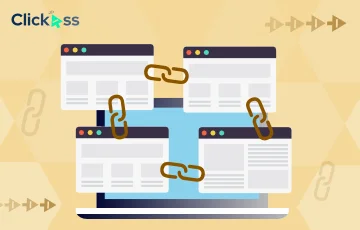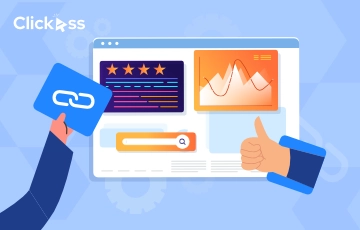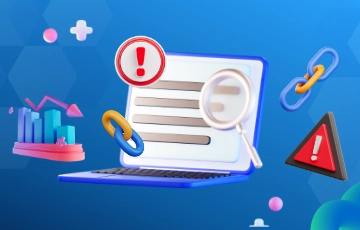In the world of websites and search engines, backlinks are like references on your resume. Or, if I was to give you a better example, ‘recommendations on LinkedIn.’
- Want ‘endorsements’ from Google on your credibility and expertise?
- Wish to see your website on the first page of a Google search when someone searches with a keyword that’s specific to your brand/product?
- Want high-authority websites to link back to your content—free of cost and organically?
You need to elevate your SEO link management game.
What Are Backlinks?
Backlinks, also known as “inbound links” or “incoming links,” are simply links from one website to another. These links connect different web pages on the internet.
For example, if Website A has a clickable hyperlink that directs visitors to Website B, the link on Website A is a backlink for Website B.
Backlinks play a crucial role in SEO (Search Engine Optimization) because search engines such as Google use them to assess the credibility, authority, and relevance of your website.
But Why Should I Manage My Backlink Profile?
A good question. A backlink profile management will keep your backlinks from getting dated or, worse, irrelevant. In other words, if you want to keep track of your search engine rankings with high-quality backlinks, you need to balance your efforts for Off-Page SEO as well as On-Page SEO.
Here’s why you should manage your backlink portfolio:
- To eliminate bad links on your website and retain the organic ones
- To get high-quality external sites to link to your website
- To avoid Google from penalizing you for possibly adhering to shady backlinking strategies
- To prevent instances of a broken backlink, which can remove you from an index
- To set up a ROI-driven, SEO-first website that converts into more traffic, visibility, and growth
So, the real question is: “How to engage in quality backlink monitoring?“
10 Useful Tips and Techniques for Backlink Management
Whether you’re looking to engage in tracking backlinks or optimizing them, having a few tried-and-tested link building management strategies doesn’t hurt.
1. Optimize Your Link-Building Campaigns for Valuable and Relevant Backlinks
Powerful backlink management starts with a strong link-building campaign.
Your link-building campaign can, in the long run, help you build a robust inbound link profile and remove the tedious task of eliminating bad links.
You see, all these initiatives are interlinked so that you get secure, moral, and relevant backlinks. Naturally, your chances of getting penalized by Google also reduce, thanks to the extensive use of white-label backlinking strategies.
Useful tips to remember:
- Cross-check the link profile of referring domains for quality.
- Focus the campaign towards high-authority websites with:
- Good link profiles
- Great Domain Ranking (DR) and Domain Authority (DA) scores
2. Conduct Regular Backlink Audits
Backlink auditing is an essential practice to keep your profile healthy. Conduct regular audits to identify and rectify issues like broken links, redirects, and toxic backlinks. Tools like Ahrefs and SEMrush can assist in this process.
Start by creating a comprehensive list of all your backlinks. Review each link to ensure it is still active and relevant. Remove or disavow any harmful or irrelevant links to prevent them from negatively impacting your SEO efforts.
3. Check the Spam Score & Disavow Unnecessary Backlinks
Did you know that, as per Moz:
- Low Spam Score = 1-30%
- Medium Spam Score = 31-60%
- High Spam Score = 61-100%
If you want to keep track of your backlink profile and get rid of spammy links, invest in a solid backlink management tool such as Moz.
This platform helps you to check the Spam Score of the backlink–an indicator of the website’s level of trustworthiness:
For your backlink strategy to work, stay away from spammy links such as:
- Links from low-authority sites
- Websites with spammy comments on a majority of blog posts
- Sites that feature low-quality guest posts just for link placement
- Links with more traffic coming from places outside your target base
- Low levels of link diversity
If the backlink has a high spam score:
- Investigate why the score is so high
- Cross-check the content’s relevance
- If the above two tips don’t work, disavow the link
4. Manage And Claim Lost Backlinks
Effective backlink management is a critical aspect of any successful SEO strategy.
One often overlooked but highly valuable facet of backlink management is the proactive approach of managing and claiming lost backlinks.
Lost backlinks occur when external websites that were previously linking to your site remove or change the links.
This can happen for various reasons, including website updates, content changes, or simply the linking site’s decision to remove the link.
While it’s natural for some backlinks to be lost over time, failing to address and reclaim valuable lost backlinks can have a negative impact on your website’s SEO performance.
Here’s why managing and claiming lost backlinks should be a priority in your SEO efforts:
1. Preserve Link Equity
Lost backlinks represent a loss of valuable link equity or “link juice.” When authoritative websites link to your content, they pass on their SEO authority to your site.
Therefore, building authoritative backlinks is not only about enhancing your site’s visibility but also about safeguarding and maximizing the SEO benefits that come with those links.
Losing such links means a potential loss of SEO value. By managing and reclaiming lost backlinks, you can retain and strengthen your website’s link equity.
2. Maintain Rankings
Backlinks play a pivotal role in search engine rankings. Losing significant backlinks can lead to a drop in your rankings for important keywords.
By actively identifying and reclaiming lost backlinks, you can help maintain your website’s visibility in search engine results pages (SERPs).
3. Rebuild Relationships
Sometimes, lost backlinks occur due to technical issues or misunderstandings.
By reaching out to the website owners or webmasters, you have an opportunity to rebuild relationships and rectify any issues that led to the removal of the backlinks.
This can not only help you reclaim lost links but also establish stronger connections within your niche.
4. Use Tools for Monitoring
To effectively manage lost backlinks, consider using SEO tools that monitor your backlink profile. These tools can provide alerts when backlinks are removed or changed, allowing you to take prompt action.
5. Relevance and Quality
While it’s important to reclaim lost backlinks, ensure that the links you pursue align with your current content and are from reputable sources. Quality and relevance should always be prioritized over quantity.
5. Get Notifications for Lost/Broken Backlinks
You can leverage Monitor Backlinks tool to:
- Set alerts for when your site loses/gains a backlink
- Track backlinks
- Create a handy list of lost backlinks to reclaim them timely
- Monitor competitor backlinks quickly and remove it
6. Track Citation + Trust Flow of Backlinks
One of the fundamental aspects of effective backlink management is closely monitoring the Citation Flow and Trust Flow of your backlinks.
These metrics, developed by Majestic, provide valuable insights into the quality and authority of the websites linking to your site.
Citation Flow measures the quantity of links pointing to your website, indicating its link popularity.
A higher Citation Flow suggests a greater volume of backlinks, which can positively influence your site’s visibility in search results. However, it’s important to note that quantity alone doesn’t guarantee quality.
Trust Flow, on the other hand, assesses the trustworthiness and authority of the linking domains.
Backlinks from websites with high Trust Flow carry more weight in search engine algorithms. Focusing on acquiring links from reputable and trustworthy sources can significantly improve your site’s credibility.
Pro tip: Use Majestic’s Majestic Topic filter to filter by quality, topic, language, and other industry-standard metrics. This tool can help you streamline your backlink management efforts and ensure that you’re not only tracking Citation Flow and Trust Flow but also aligning your backlinks with relevant topics and high-quality sources.
7. Analyze Your Do-Follow vs. No-Follow Ratio
Typically, two types of backlinks point to your domain: Do-follow and No-follow links. Google uses these links as indicators to analyze whether or not to pass the link equity.
The ratio between these two links directly reflects the quality of your link building strategy in the eyes of Google.
Here are a few tips to remember when checking Dofollow and Nofollow links:
- Focus more on Dofollow links than Nofollow links, as the former affects SEO more
- Do not use low-quality website links for your Dofollow links
- Keep checking the ratio of your Dofollow versus Nofollow links–if you have too many Dofollow links, Google will consider it as a red flag, and if you have too many Nofollow links, you won’t get any link juice
Pro tip: To make the most of this tip, get nofollow links from publicity websites and dofollow backlinks from relevant pages.
8. Foster Relationships for Natural Backlinks
Building relationships within your industry or niche can be a powerful strategy for acquiring natural backlinks.
Engage with influencers, bloggers, and other website owners through social media and networking events. When you establish genuine connections, they may naturally link to your content or mention your brand in their articles.
9. Measure Your Backlink’s Impact on Search Engines
In SEO link management, the quality of your backlinks can affect visibility on search engines.
So, use backlink management software to understand which links are performing and which ones aren’t. You can also calculate the Link Quality Score using the following four parameters:
- Domain Authority (best score of 4)
- Relevance (best score of 3)
- Site Quality (best score of 2)
- Engagement (best score of 1)
| DA | Link Quality Score | Example |
| DA 70 and above | 4 |
|
| DA 50-69 | 3 |
|
| DA 30-49 | 2 |
|
| DA below 29 | 1 |
|
Your Link Quality Score quantifies how relevant your backlinks are to your page.
10. Monitor the Referral Traffic Coming from Backlinks
Finally, within your link building management strategy, remember that your backlinks must give you organic referral traffic–either from relevant sites or by using specific keywords.
By understanding the volume of referral traffic and user engagement levels, you can choose to remove or retain backlinks:
What Metrics Do You Need to Track in Your Web Backlink Profile?
Track these five metrics for building a high-quality link building management strategy:
Metric #1: Number of Backlinks
An important metric, it provides an overview of the website’s link profile. It also assists in identifying any changes you need to make within the number of backlinks over a period of time.
Metric #2: Referring Domains
This metric reflects the number of unique domains that link to a website. You must track it to identify the quality and diversity of your inbound link portfolio.
Metric #3: Anchor Text
Simply refers to the text that is used within a link to a website. Tracking this text enables you to identify whether your site’s inbound link profile has too many backlinks with the same anchor text (making it spammy) or not.
Metric #4: Link Quality
The fourth metric signifies the relevance and authority of websites that choose to link to your site. By removing the low-quality links, you can protect your SERP rankings.
Metric #5: Link Velocity
Finally, the fifth metric is link velocity or the speed at which your website acquires new backlinks over time. If there are sudden drops or spikes in your backlink acquisition strategy, you will come to know with this metric.
Supercharge Your Backlink Management Efforts with Clickass
In essence, backlinks act as votes of confidence in your site. When implemented strategically, they can:
- Influence search engine rankings
- Help readers discover valuable content on the internet
- Establish authority among reputable and reliable websites as well as search engines within your industry/niche
If you’re unsure of where or how to initiate your SaaS link building campaign, connect with me. I specialize in helping your website gain visibility, driving activations, SQLs, and conversions – not just website traffic.
My approach is rooted in consistent high-quality guest post content and backed by years of SEO link management experience.
Transform your SaaS business with niche-specific links that amplify your online presence and impact.
Frequently Asked Questions (FAQs)
What is backlink management?
Backlink management refers to the process of monitoring, analyzing, and actively maintaining the backlinks that point to your website.
At its core, backlinks are hyperlinks from other websites that point toward your site. They play an instrumental role in search engine optimization (SEO).
Effective web backlink management involves 360-degree tasks such as:
- tracking the quality and quantity of backlinks
- ensuring that the backlinks come from reputable sources
- taking requisite action to maintain or improve your website’s backlink profile for improved SEO performance
How can I manage my website’s backlinks?
You can engage in effective link building management using these time-tested strategies:
- Conduct a thorough backlink audit of your existing backlinks by:
- Identifying the quality and quantity of backlinks
- Check for spammy links that could harm your SEO
- Disavow toxic, irrelevant, or low-quality links using Google’s Disavow Tool, as you cannot do this manually. Plus, doing so informs search engines to ignore those links and keep your SEO efforts effective.
- Monitor backlinks consistently and track changes in your current portfolio using backlink management software. You can also look for new links, lost links, and changes in the anchor text.
- Analyze your competitors’ backlink profiles to identify opportunities for obtaining new high-quality backlinks.
- Actively engage in white-hat link-building strategies to acquire high-quality backlinks from authoritative websites. Leverage opportunities for guest posting, outreach, and content marketing to advance your backlink management efforts.
- Keep regular reports on your inbound link analysis and SEO performance using tools such as Google Search Console, Moz, SEMrush, and more.
What are some important tools for measuring backlinks?
If you are looking for a backlink management tool, look no further. Here are some of the most popular backlink management software for tracking backlinks:
- Ahrefs is a comprehensive SEO tool that provides detailed information on backlinks (think: insights on quality, quantity, and referring domains)
- Moz offers tools like Moz Link Explorer to track and analyze backlinks. You can also use Moz Spam Score to identify potentially harmful links.
- SEMrush provides backlink analysis, audit, and tracking features along with advanced features such as competitor analysis and keyword research.
- Google Search Console offers basic information on backlinks pointing to your site and helps you identify potential issues with your backlink profile.
- Majestic SEO specializes in backlink analysis and provides metrics like Trust Flow and Citation Flow.
Can backlink management be outsourced to a third-party service?
Yes, absolutely! You can outsource backlink management to a third-party SEO agency or a professional who specializes in SEO services.
These professionals will not only possess the expertise and tools to effectively manage your website’s backlinks, but they will also offer a reputable and trustworthy service.
Remember that poor backlink management practices can cause your website’s SEO to plummet.
So, prior to outsourcing, ensure that the service provider:
- Follows white-hat SEO practices
- Communicates transparently
- Can align with your goals and expectations for backlink management
- Keeps you informed about the strategies being implemented as well as the progress being made
About The Author
Dhruv Mehta
Dhruv Mehta is a SaaS link building expert with a passion for demystifying digital strategies. Join him on a journey through insightful SaaS SEO and Link Building Insights, where he transforms digital novices into confident navigators of the online world.
Table of Contents
ToggleRelated Posts
Unlocking the Power of Reciprocal Links in 2024: Strategies for SEO Success
13 Link Building Challenges & How to Overcome Them
16 Link Building Mistakes to Avoid in 2024
What Are PBN Backlinks? (And Why You Shouldn’t Use Them)
Analyzing Your Backlink Profile for SEO & 2 Perfect Examples
10 Ways to Index Backlinks Faster in 2024
Nofollow vs. Dofollow Backlinks: Understanding Their SEO Implications
Tiered Link Building: Everything You Need to Know
Skeptical About Forum Backlinks? Here’s What You Need to Know
Backlink Management in 2023: 10 Ways to Track and Organize Your Backlinks
What is Link Equity and How Is It Determined?
Link Building 101: Master The Basics and Beyond
The Power of Backlinks: Why They Are Essential for SEO Success
Link Insertion: How to Do it with $0 Investment?
Everything You Need to Know About Link Farming
9 Underrated Techniques to Get High Authority Backlinks in 2023
Doorway Page Explained: Ultimate Effects on SEO And Rankings
Top of Funnel Marketing For SaaS: Strategies, Measurement, and Examples
Link Building Outsourcing: The Definitive Guide [2023]
How Niche Driven SEO Can Uplift Your Client’s Rankings?
8 Cost-Effective Ways to Get You Higher Search Engine Rankings
Does CTR Manipulation Really Work?
An Ultimate Guide to Growth Marketing

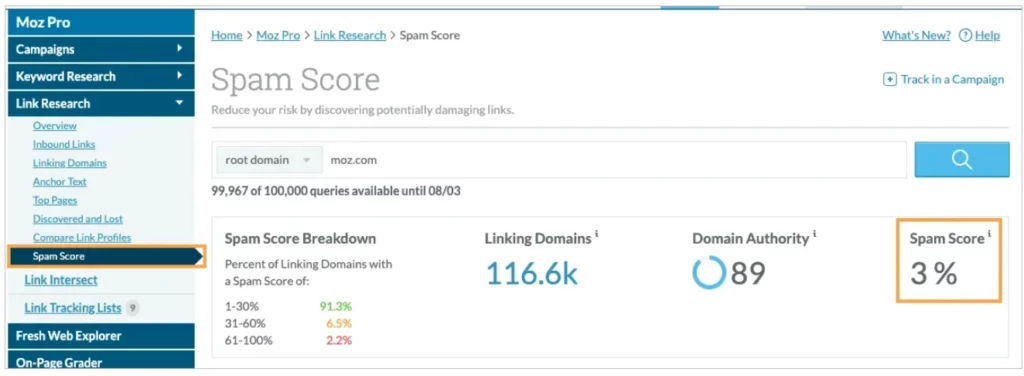
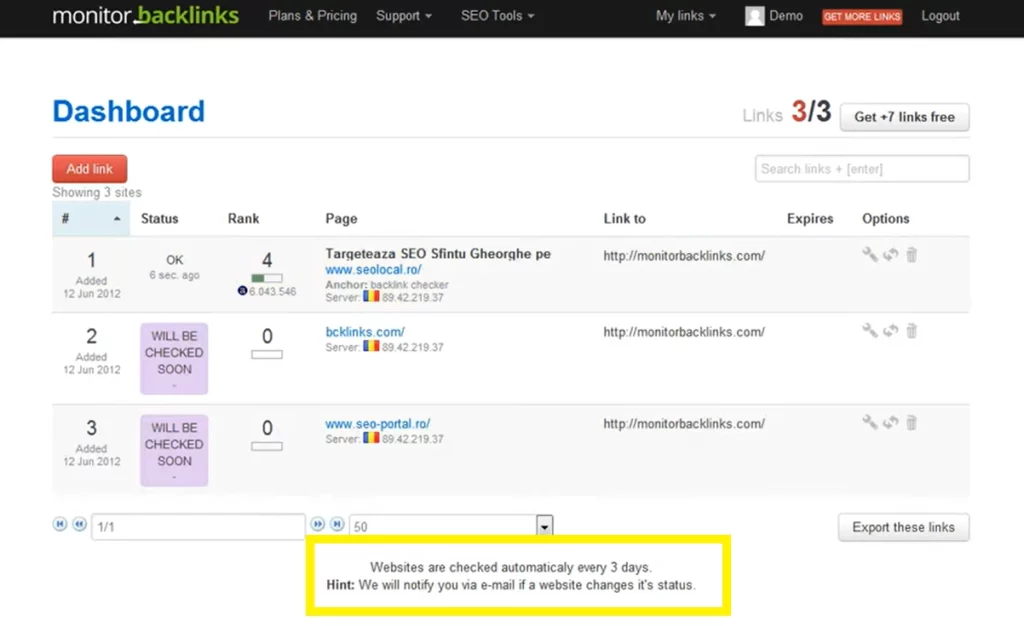
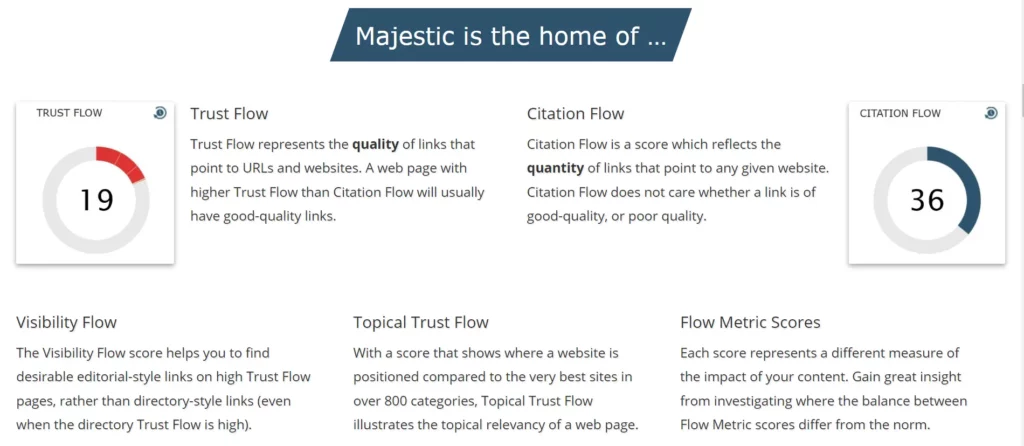
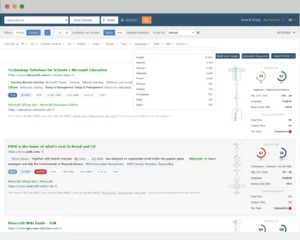


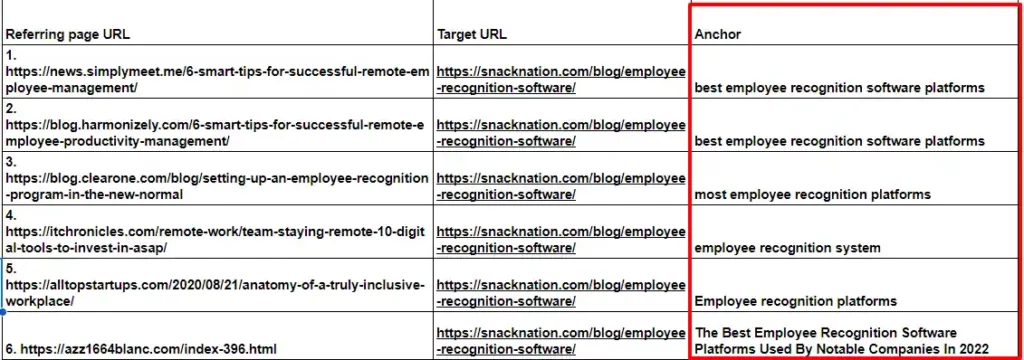
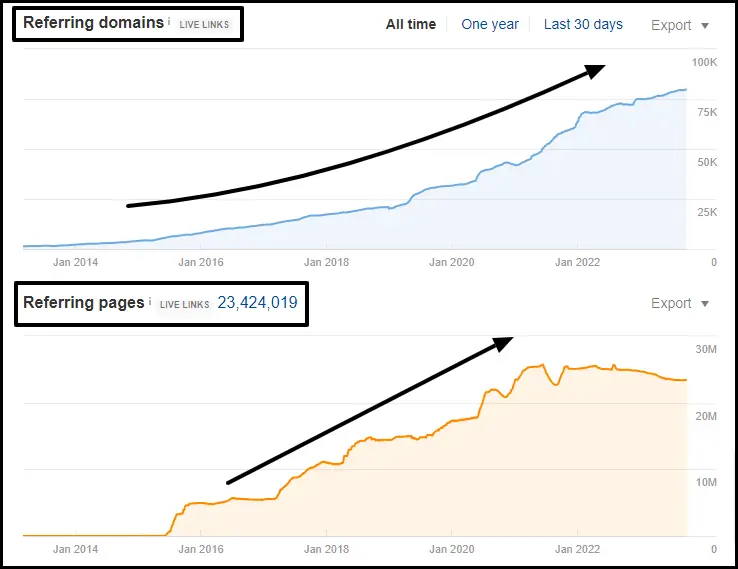


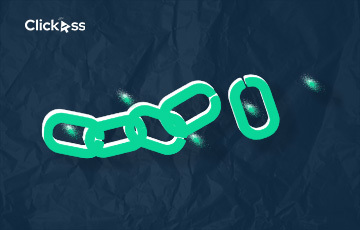

![Backlink Profile: Analysis + [2 Perfect Examples]](https://clickass.io/wp-content/uploads/2024/01/Examples-of-Perfect-Backlink-Profile3-1.webp)
